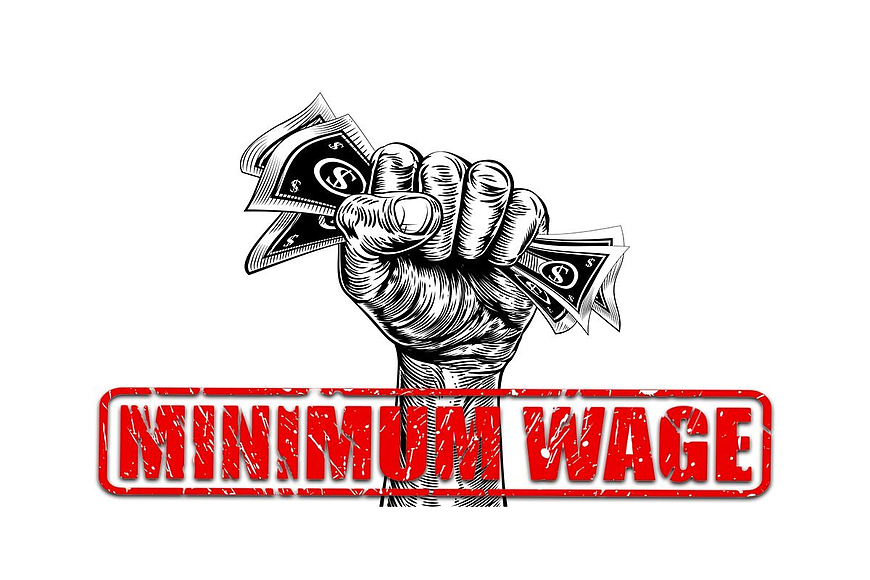- April 18, 2024
-
-
Loading

Loading

The interpretation of the facts cited, and conclusions reached in Adrian Moore’s piece titled “Don’t look at $15 minimum wage out of context” in the Feb. 7, edition of the Sarasota Observer is representative of the view of the elite who want to maintain the economic status quo. It is tone deaf to the needs of the most vulnerable members of our society and serves the cause to exacerbate the divide between the wealthy and the poor. It plays on short-term fear as opposed to looking at long-term economic benefits that a significantly higher minimum-wage would produce, especially in a full-employment economy (although, I can take issue with how employment is measured).
It fails to recognize the minimum- and low-wage worker’s spending habit, which is that they spend virtually every dollar they make. I agree with Mr. Moore’s point that hourly workers who make above minimum wage, but below the proposed $15 minimum, will also benefit due to fairness, although he spins it to make it seem like a bad thing. Quite frankly, if you want to boost the economy, give poor people more money, because they spend it! Real economic and social growth is a bottom up affair not a trickle down. People in higher income strata save a larger percentage of their income than those at the bottom and spending is good for the economy.
His main concern seems to be that labor force participation rates for teens age 16-19 is dropping, and has been doing so steadily since the late 1970’s. He concludes that “rising minimum wages around the nation have reduced the number of teenagers in the workforce.” I believe that this group’s reduced participation in the workforce has a lot more to do with increased educational opportunities. According to the National Center for Educational Statistics, high school dropout rates have declined from 10.9% in 2000 to 6.1% in 2016. Enrollment in higher education increased from about 50% of high school graduates in the late 1970s to over 66% by the late 1990s. What’s better for our country, educated youth or a large teenage workforce?
As far as automation is concerned, it’s coming no matter what. However, the notion that keeping the minimum wage where it is will protect low-skill workers from being replaced by automation is ridiculous. If a machine can do a job that a human can, it will always eventually be cheaper. Technological progress and change are what has driven our economy not a low minimum wage. The question is how will humans react and interact with automation and technology? These questions can only be answered over time and experience.
The fact that a minimum wage is not a living wage is true. But the reality is that a vast number of people, especially here in Florida, are forced to do just that. Many older people in our state work in jobs that pay well below the proposed $15 an hour and are unable to make ends meet. This is especially true of the convenience retail and food service industries. The number of locations devoted to these industries is growing rapidly and they are staffed by low wage workers.
The writer’s conclusion states that “we need to make it easier for people to move up and beyond minimum-wage jobs,” and leave the minimum wage where it is. Yet he offers no solutions to this dilemma. It would be nice if upward job mobility could be made easier but, rising through the ranks is typically based on opportunity, merit, and ability these factors are not available to every individual at the bottom of the pile. However, we can improve the lives of millions of workers and the economy by raising the baseline minimum-wage to $15 an hour.
James Sheib
Siesta Key
In the recent story “Don’t Look at $15 Minimum Wage Out Of Context,” the writer, Adrian Moore, does just that. With a one-sided argument, a dearth of facts and a stunning cluelessness concerning the makeup of America’s workforce, Moore gives us a slanted, pro-business view of the minimum wage issue. And the Observer boosts this prejudiced perspective with a graph that portends to show a relationship between “Higher Wage, Lower Employment (of teen-agers)” that merely shows a decline in the number of teens in the workplace. Where’s the relationship between that and the minimum wage? Is there one?
The minimum wage is a complex and contentious issue that deserves an airing of opinions from all corners. (Some reports claim that 30 is the average age of minimum-age workers.) Please give your readers a complete story if you choose to do one at all, or clearly label these opinion pieces as such.
Robert Cullinane
Sarasota